Best cameras for astrophotography in 2024: Shoot for the stars
We've rounded up the best cameras for astrophotography, perfectly designed to handle low-light situations, with a high dynamic range and great ISO handling.
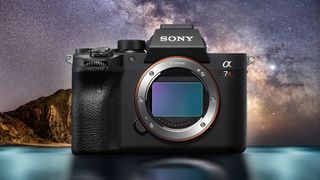
- Quick list
- Best dedicated astro camera
- Best color astrocam
- Best mirrorless
- Best Sony for astro
- Best rugged option
- Best entry level Nikon
- Best entry-level
- Best DSLR overall
- Best for low light
- Best pro camera
- Best for timelapse
- Best for versatility
- Best value for money
- Best lightweight model
- Best astro cameras FAQ
- How we test
The best cameras for astrophotography are designed to perform in low-light conditions, enabling you to capture quality images of the night sky. To do so, they must have great noise handling abilities and ISO performance, more so than 'standard' cameras.
This guide features a wide range of cameras, from brands large and small and across different price points. Whether you're a seasoned astrophotographer or just looking to get started with an entry-level model, you'll find options for your needs and budget.
Below, you'll find our top picks for the best cameras for astrophotography, including a summary of each unit alongside key stats and information. You can also find the latest deals and discounts on each model from trusted retailers to ensure you get the best price on your dream camera.
We've considered how well each camera in this guide captures the brightest and darkest areas of a photo (i.e. their dynamic range), as well as their ISO performance and how good they are at handling noise. How well a camera can autofocus in poorly lit situations is also an important factor to consider when choosing a camera for astro.
Once you've picked out a camera that suits your needs, check out our guide to the best lenses for astrophotography to accompany it. If you want to go one step further, read our guide on best telescopes so you can capture images of the night sky with more accuracy. If you're looking for an everyday camera, consider checking out our guide on the best cameras for photos and videos.
The quick list
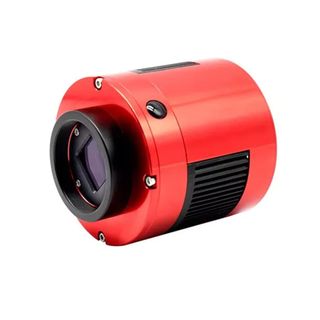
Best dedicated astro camera
This is a dedicated scope-mounted astro-camera. It is full-color and has an onboard cooling system to minimize noise for long-exposure astrophotography. You also receive a plethora of accessories for serious astro work such as deep sky imaging.
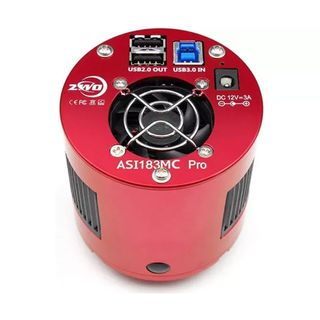
Best color astro camera
Lighter and smaller than the aforementioned model but by no means inferior. You'll need experience with dedicated astro cameras but with practice, you'll be able to produce some awe-inspiring images, especially of the planets.
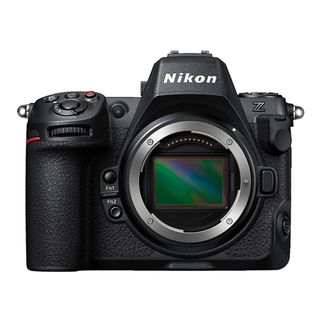
Best mirrorless camera for astro
This is simply one of the best cameras on the market. For low-light photography, it has Starlight View which drops the autofocus detection range down to -9EV, the best we've ever seen. There's even a dedicated Night Vision mode that keeps your night vision intact.
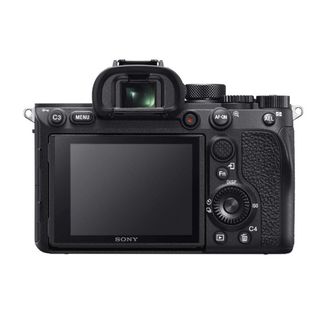
Best Sony for astro
This is the highest-resolution full-frame camera that produces incredible-quality images that display incredible detail in both light and dark areas — ideal for astrophotography. You can push the ISO to ISO 6400 before seeing any troublesome noise.

Best rugged option
With excellent weather sealing, you don't have to worry about dust or moisture ingress with this compelling all-round package. The second memory card slot gives peace of mind and you can even leave the shutter open for 15 minutes for those wonderful star trail photos.
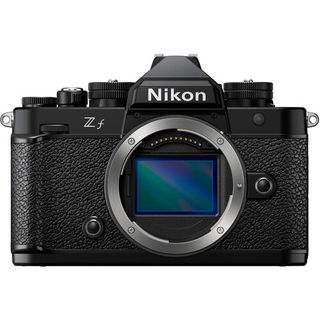
Best entry-level Nikon
While the 24.5MP sensor isn't their most impressive, the Nikon Zf can autofocus down to an unheard-of -10EV, which is the lowest of any Nikon camera. If you're looking for a fantastic camera for low light and astrophotography that won't break the bank, this is a great option.
Load next 9 products ↴

Best entry-level Canon
This is Canon's lightest mirrorless body, it's slim too so highly portable. It is exceptional at handling high ISO, even over ISO 5000 we were astounded— fantastic at this price point.
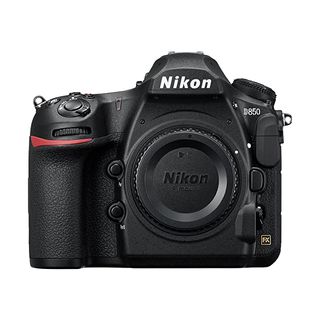
Best DSLR
The backlit buttons make shooting in the dark much easier. You can achieve great high-resolution stills that easily rival newer mirrorless models. The autofocus detection range goes as low as -4EV, and you can use the built-in timelapse feature to capture a series of images effortlessly.
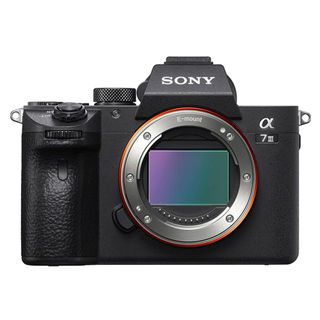
Best low-light mirrorless
The RAW files from your astro shoot will retain good detail and contrast up to ISO 12,800. The most impressive thing is the high dynamic range. Pull impressive detail out of the shadows without discoloration. It also boasts outstanding weather sealing.
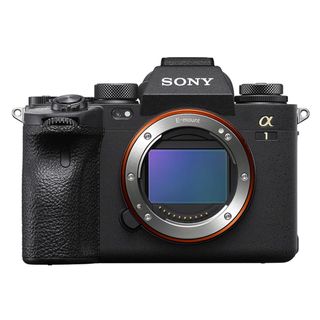
Best pro-level camera
If you shoot more styles other than astrophotography, particularly sports, action and wildlife, this is one of the best pro-level cameras on the market — it can do everything. It has great weather sealing and boasts impressive low-light performance.

Best for timelapse astro
Astrophotographers will love the 4K timelapse feature, and the vari-angle touchscreen display makes composing your shots easy. You get a lot of camera for the money, so it's perfect for beginners.
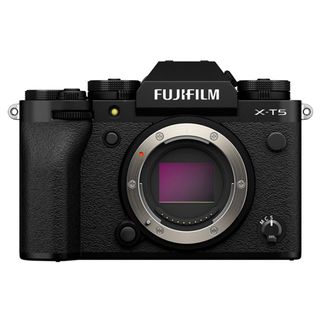
Best for versatility
There is a lot of tech packed into this stylish, compact and ergonomic Fujifilm X-T5. Though the dials will take a bit of getting used to, the image stabilization is good in low-light so you can shoot handheld at slower shutter speeds with better results than a camera without IS. The auto White balance is accurate, and you can capture time-lapses without needing a separate intervalometer.
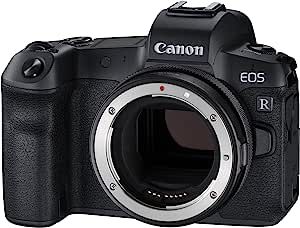
Best value for money
Because this is relatively old now, it has become an excellent value for money, with low light performance above average, and the happiest when shooting long exposures, perfect for traditional astrophotography. It would be ideal for users who are transitioning from Smartphones.
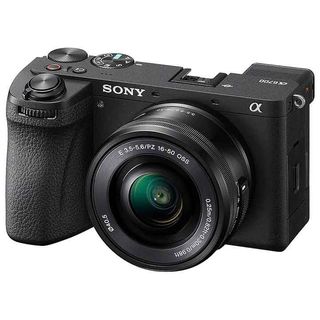
Best lightweight model
Sony is well known for producing cameras with excellent ISO performance and this is no different. It's robust but lightweight and features a fully articulating touchscreen for easy composition. It features AI-powered autofocus and in-body image stabilization, and you can push the ISO high before seeing too much noise.
Best cameras for astrophotography we recommend in 2024
Why you can trust Space.com
Best dedicated astro camera


Specifications
Reasons to buy
Reasons to avoid
✅ You're looking for an affordable camera dedicated to astro: The onboard cooling system helps minimize noise during long exposure shots. It's also suitable for short exposure lunar and planetary imaging.
❌ You want to shoot other styles: This is a dedicated astro camera; other models in this guide can shoot other photography styles.
🔎 ZWO Optical ASI533MC Pro: A great option for individuals looking for a dedicated astro-imaging camera at an affordable price. ★★★★★
The ZWO Optical AI 533 Pro is a dedicated astro camera, so while it won't tick all the day-to-day photography boxes, it certainly delivers on astrophotography. The images it generates are clean and noise-free, reducing the need to use any post-processing software. You won't find any amp glow either, which means your raw images are much cleaner than results from other types of cameras.
In our ZWO Optical ASI 533 Pro review, we called this camera an affordable and user-friendly option for anyone looking for a dedicated astrophotography camera. In fact, we struggled to find any real negatives and scored it a full five stars out of five.
With a square 9-megapixel sensor, the ZWO Optical ASI 533 Pro is different to most cameras, but don't let that put you off: It's incredibly capable, even with what seems like a low megapixel count. The images it produces are almost free of noise, complete with beautiful colors thanks to its 14-bit ADC. And with other features such as an 80% Quantum Efficiency and a fast frame rate of 20FPS, it's exceptional at capturing light.
Similar to many other specialized astrophotography cameras, the ZWO Optical ASI 533 requires an external power source to operate its cooling system. If you're aiming for long exposure shots, make sure to set this up beforehand.
The only (slight) criticism we can think of when it comes to the ZWO Optical ASI 533 Pro is that it's only able to shoot in color: If you want a monochromatic astrophotography cameras, this one isn't for you. But when it produces colors this beautiful, we can't really hold that against it.
- Read our ZWO Optical ASI533MC Pro review
| Attributes | Notes |
|---|---|
| Design | Heavy for its size. |
| Performance | Clean data quality. |
| Functionality | Great pixel size for longer focal length telescopes. |
Best color astro camera


Specifications
Reasons to buy
Reasons to avoid
✅ You're looking for an affordable dedicated astro camera: With a huge framerate and an electronic shutter to minimize camera movements, this camera can handle long exposure shots, as well as short exposure lunar and planetary imaging.
❌ You want to shoot other styles: This is a dedicated astro camera, so if you want an all-rounder, you'll find better options in this guide.
🔎 ZWO Optical ASI183MC Pro: Slightly lighter than the model above, this is a great option for individuals looking for a quality, affordable astro camera to take on the go. ★★★★½
The ZWO Optical ASI 183MC Pro is another excellent full-color astrophotography camera. This dedicated astro camera creates beautifully vivid images with minimum noise.
Weighing only 0.9lbs/410g, the ZWO Optical ASI 183MC Pro is more lightweight than the model above, while remaining extremely capable. It's also compact, measuring just 62mm in diameter. Despite its small, portable design, it's a powerful piece of equipment. It has a resolution of 20.48MP, a peak Quantum Efficiency of 84% and its read noise is minimal at just 1.63.
Additionally, it comes equipped with a full-color sensor, eliminating the need for extra RGB filters in your photography, simplifying your setup, and lightening your gear load. As it's a serious astrophotography camera, you'll need to have experience with dedicated astro cameras to get the most out of it.
In our ZWO ASI183MC review, we found it excels at capturing stunning shots at its maximum resolution, boasting a speed of 19 frames per second (FPS), which is perfect for solar or lunar photography. If you choose a lower resolution, the frame rate shoots up significantly, allowing you to capture hundreds of frames per second! This camera provides versatile options for capturing different types of images.
To use the ASI 183, you'll need a laptop with dedicated software, featuring a USB-A 3.0 port for efficient data transfer. You'll also need a telescope and a 12V power supply to operate the cooling system.
- Read our full ZWO Optical ASI183MC Pro review
| Attributes | Notes |
|---|---|
| Design | Small and lightweight. |
| Performance | 19FPS perfect for solar/lunar photography. |
| Functionality | Requires dedicated software. |
Best mirrorless camera for astro





Specifications
Reasons to buy
Reasons to avoid
✅ You can afford to: Simply put, if you have the budget, there's no reason not to buy this camera — it will be a reliable photography and astrophotography companion for years to come.
✅ You're a pro: This camera is aimed at professionals due to its high price tag and capabilities, so it's a great option if you make money from photography.
❌ You want something lightweight and portable: This is a professional camera with huge functionality, so it's larger than less sophisticated models.
🔎 Nikon Z8: We think this is the best camera available on the market. If you are lucky enough to be able to afford it, go for it. ★★★★★
Nikon's excellent Z8 camera came to the market in May 2023, and it's every astrophotographer's dream. Its expanded ISO of 102,400 is incredible, and it packs in numerous features that make it the ideal camera for capturing the night sky.
We love the autofocus system in this camera. In our Nikon Z8 review, we were blown away with how well it performs: it's fast and accurate, and with a dedicated Starlight View, the autofocus detection range drops as low as an incredible -9EV. Even in low-light conditions, it excels at recognizing subjects' eyes.
The Nikon Z8 offers a handy night vision mode, a feature we wish more cameras had which is particularly convenient for astrophotography. You can tailor the night vision to your needs, but essentially, it dims the screen and electronic viewfinder, only displaying red pixels, which helps to preserve your night vision.
If you're into more than just astrophotography, the Nikon Z8 is a top contender as one of the best cameras out there. It performs exceptionally well in various types of photography, and its compatibility with a wide range of lenses adds to its versatility. While it's a significant investment, it's a camera built to last for many years to come.
- Read our full Nikon Z8 review
| Attributes | Notes |
|---|---|
| Design | Outstanding build quality. |
| Performance | Starlight mode enables autofocus detection down to an unheard of -9EV. |
| Functionality | Night vision mode for astrophotographers. |
Best Sony for astro


Specifications
Reasons to buy
Reasons to avoid
✅ You shoot astrophotography and other styles: This is a great camera for photographers who shoot a range of styles, including astrophotography.
✅ You're a professional: This is an impressive pro-level camera, so anyone making money from photography will love it.
❌ Your computer or storage system can't handle larger files: The massive 61-megapixel sensor creates huge files that could be too much of a test for your existing file storage or computer processor setup.
❌ You also shoot action or sports: It wouldn't operate fast enough with its current buffer speed when shooting at full resolution.
🔎 Sony A7R IV: This camera is hard to beat; the image quality is fantastic, it's highly customizable and works great in low light. ★★★★½
The Sony A7R V has succeeded the Sony A7R IV, but newer doesn't always mean better. The latest version does include some upgrades on its predecessor which aren't specifically geared towards astrophotography, and it also comes with a big price bump. For that reason, we would still recommend the Sony A7R IV for astrophotography over its successor.
With its three-inch LCD screen, the Sony A7R IV has an impressive resolution of 2.36 million dots. Its megapixel count of 61MP is also among the best we've seen for a mirrorless camera, which is ideal if you're looking to make giant prints of your photos.
In our Sony A7R IV review, we praised this camera's exceptional performance and image quality. It can capture incredible details in both bright and dim lighting conditions, excelling at capturing both bright and dim lights in a single shot, which is ideal for astrophotography. In fact, we've struggled to find anything that beats it.
Even at a high-sensitivity setting like ISO 6400, the images stay relatively clean with minimal noise. However, if you increase the ISO further, you'll notice a rise in noise, which is expected in such situations. Now that some of the best photo editing apps have pretty impressive AI denoise capabilities, you definitely won't struggle to use this camera for astrophotography.
The downside to the Sony A7R IV's huge 61-megapixel sensor is that its images take up a lot of file space. Transferring them to your computer will take longer, and it could be a problem if you don't have adequate storage space. We've also found that the large image size occasionally leads to buffer strain if you're using the camera's continuous shooting function. Thankfully, you can alleviate the issue by opting for lossless compressed RAW files in the camera's settings — and using a high quality, fast memory card will help too.
It's also worth noting that the Sony A7R IV doesn't have a fully articulating screen (something that's been rectified with the newer A7R V), but that shouldn't be a dealbreaker: the screen tilts, which means you don't have to bend down into uncomfortable positions to check your settings when you're shooting the sky.
- Read our full Sony A7R IV review
| Attributes | Notes |
|---|---|
| Design | Tilt only screen. |
| Performance | Incredible image quality. |
| Functionality | Massive 61MP sensor means noisy images. |
Best rugged option





Specifications
Reasons to buy
Reasons to avoid
✅ You're a Nikon purist: The menus, layout and overall functionality surpass those of Canon's mirrorless cameras in a few areas.
❌ You already own the Nikon Z6: The revision isn't enough to warrant purchasing the Z6 II as an upgrade.
🔎Nikon Z6 II: A great second camera for professionals, or a good option for first-timers jumping into the world of mirrorless cameras. ★★★★
The Nikon Z6 II, the successor to the already excellent Z6, sits somewhere between entry-level and pro-grade cameras. It's a great choice for just about any type of photographer, and it's very capable for day-to-day shooting of images and videos. It's also a great choice for astrophotographers, especially those who like to head out into the wilderness.
Our Nikon Z6 II review praised the durable feel of the camera's body; the excellent grip is very comfortable to hold, and its weather sealing is also impressive — something you don't see on more entry level cameras.
The Z6 II retains many of the features of its previous version while introducing some minor yet significant enhancements. One notable addition is the second memory card slot, which provides added peace of mind during photo sessions by offering a backup option. Additionally, the camera boasts a faster burst rate, enhanced focus capabilities, quicker image processing and the ability to shoot 4K video at 60 frames per second.
You have more in-camera control over long exposures thanks to the larger range of shutter speeds. The slowest shutter speed is a whopping 900 seconds (15 minutes!), so pair it with one of the best star trackers and you could get some seriously detailed astro shots. Thanks to the weather sealing, you could even capture images during heavy rain or dust storms if you wanted to!
- Read our full Nikon Z6 II review
| Attributes | Notes |
|---|---|
| Design | Durable feel, good weather sealing. |
| Performance | Excellent for stills and video. |
| Functionality | Many small upgrades from predecessor. |
Best entry level Nikon








Specifications
Reasons to buy
Reasons to avoid
✅ You don't have a huge budget: While $2,000 isn't exactly in the 'budget' category, it's still on the more affordable end of the spectrum, especially for the quality you get.
✅ You do a lot of low-light shooting: It can autofocus down to -10EV and has fantastic noise handling, making it a brilliant option for low-light photography.
❌ You want a lot of megapixels: 24.5MP is more than enough for an entry-level camera, but if you want to do professional work or create large prints, consider other options.
❌ You do a lot of video: It can only shoot 4K video up to 30p, so there are better options out there for videographers.
🔎Nikon Zf: A stylish camera with the build quality, functionality and performance to match. This camera offers excellent value for money when compared with some of the more expensive Nikon models. ★★★★½
Released in September 2023, the Nikon Zf is Nikon's newest mirrorless camera. Sitting just above its entry level range, it's a great quality camera which performs valiantly in low light situations — and it comes with a relatively affordable price tag, in the realm of astro cameras. Don't just take our word for it though: This camera won the award for best full frame camera at the Eisa awards in 2024.
As we noted in our full Nikon Zf review, what's most impressive about this camera is its autofocus. It can focus down to -10EV, even lower than the much more expensive Nikon Z8. It also handles noise very well and is incredibly capable at capturing beautiful images, despite its relatively small 24.5MP sensor. While it has drawbacks, we'd actually consider the smaller sensor a benefit for astrophotography, as this generally means less noise.
The Zf shares the same high-performance processing engine as the Z8 and Z9, combining style with power and speed. We admired its design, which reminded us of classic film SLR cameras but with all the advanced features of modern mirrorless cameras. It's equipped with numerous dials and controls for easy access to settings, and the fully-articulating touchscreen simplifies shooting from difficult angles.
However, it's not flawless, especially for professional photographers who may find it lacking. The 24.5MP sensor doesn't excel in capturing intricate details, and the grip may feel too small for those with larger hands.
Despite these drawbacks, we believe the Nikon Zf provides great bang for your buck. If you're considering transitioning to a full-frame camera without overspending, this is a solid choice. Plus, there's a wide selection of lenses to expand your collection, which you can continue using with a more advanced camera in the future.
- Read our full Nikon Zf review
| Attributes | Notes |
|---|---|
| Design | Built to stand the test of time. |
| Performance | Outstanding low light capabilities and excellent noise handling. |
| Functionality | -10EV is practically unheard of. |
Best entry-level Canon





Specifications
Reasons to buy
Reasons to avoid
✅ You want something lightweight: This is the lightest mirrorless Canon body available; its slim body makes it very portable, too.
❌ You like having two card slots: There is only one SD UHS-II card slot.
🔎 Canon EOS R8: A good entry into Canon's full-frame mirrorless system which won't break the bank. ★★★★½
A small and compact camera with an affordable price tag, the Canon EOS R8 is a great option for beginners on a budget. That's not to say it's a basic camera by any means: Canon has packed in some excellent features here, making this camera an excellent choice for astrophotography regardless of budget or skill.
The EOS R8 is perfect if you're looking to move into full-frame photography for the first time without having to spend a fortune on a professional-grade camera. Full-frame means you can take advantage of the entire field of view through the lens, as opposed to a crop sensor camera which uses only a portion of the lens's view.
This is also one of the lightest Canon cameras available, weighing in at just 0.91lb/414g. Of course, it's going to be heavier once you have a lens attached to it, but the bodt is much lighter than many of its counterparts.
In our Canon EOS R8 review, we found this to be a surprising astrophotography winner, largely thanks to how well it handles high ISO noise. It doesn't, however, have in-body image stabilization, which is one of the reasons the R8 manages to be so affordable. That said, for astrophotography, most shooters rely on tripods, so it's a feature you can likely do without.
Saving money by buying this camera instead of more expensive models works well, especially if you are considering purchasing the best lenses for astrophotography like the Canon RF 28-70mm f/2L USM or Canon RF 24-70mm f/2.8L IS USM.
- Read our full Canon EOS R8 review
| Attributes | Notes |
|---|---|
| Design | Slim, portable body. |
| Performance | Great high ISO handling for astro. |
| Functionality | Video stabilization less impressive than more expensive Canon models. |
Best DSLR overall




Specifications
Reasons to buy
Reasons to avoid
✅ You want a range of astro-specific features: Backlit buttons, a huge ISO sensitivity range and excellent noise-handling capability, as well as the flip-out touchscreen and an in-built timelapse feature make this an ideal camera for astrophotography.
❌ You want a mirrorless camera: DSLR cameras are generally being faded out by brands which are now focussed on mirrorless models.
🔎 Nikon D850: Despite being an older DSLR, it was built to last, and still easily rivals the newer mirrorless models, especially when it comes to astrophotography. ★★★★½
Mirrorless cameras may be taking over, but there are still plenty of fantastic DSLRs on the market, and the Nikon D850 is one of them. Although it's a little old now, this camera is still one of our favorites and goes head-to-head with some of the most premium mirrorless cameras out there thanks to its incredible features.
Its EXPEED 5 processor may be five years old but it's still very fast, and the camera's ISO range of up to 102,400 never fails to impress. As we mentioned in our Nikon D850 review, however, it's the robust weather sealing of the camera body that sets it apart, making it ideal for shooting in various weather conditions. Built with an aluminum alloy, it's robust but still lightweight — and its backlit buttons are ideal when you're shooting in the dark.
The D850 boasts 153 autofocus points, and it's able to focus down to -4EV. That's less than Nikon's newer mirrorless cameras like the R8 and Zf, but it's still good enough to focus well in low-light conditions, and we've been able to capture beautiful images of the night sky with this DSLR. Making use of a Multi-CAM 20K autofocus sensor and TTL phase detection makes it operate excellently.
While the continuous burst frame rate might appear slow at 9 frames per second (FPS), it's worth mentioning that each image is a substantial 45.7 megapixels. Additionally, the D850 can create time-lapse videos and shoot video in 4K at 30 FPS. When recording videos, it employs "live" zebra stripes to identify potential exposure issues, allowing you to adjust settings in real time instead of correcting exposure problems during post-production.
Overall, despite its age, this DSLR more than earns its place on this list, performing excellently in astro and other photography styles.
- Read our full Nikon D850 review
| Attributes | Notes |
|---|---|
| Design | Bulky compared to mirrorless equivalents. |
| Performance | Excellent dynamic range in photographs. |
| Functionality | Autofocus detection range down to -4EV. |
Best low light mirrorless camera

Specifications
Reasons to buy
Reasons to avoid
✅ You want a 'jack of all trades': The Sony A7 III is a great generalist camera. While it's good for astrophotography, it's also an excellent all-rounder for both stills photography and video.
❌ You like a clean menu system: Though Sony has improved its menu system on its latest cameras, the A7 III still feels hard to navigate in some areas.
🔎 Sony A7 III: Great for generalist photographers who also shoot astro. Though it isn't marketed as being a camera with astrophotographers in mind, its low-light performance is impressive. ★★★★½
Although the Sony A7 III was released in April 2018 and there are certainly better and newer models available, we would still recommend considering this as a great astrophotography camera as it's exceptional in low-light conditions.
With a low light autofocus detection of -3EV, it isn't quite as sophisticated as other models but still performs well. In our Sony A7 III review, we were particularly impressed with the high dynamic range — something Sony is well known for and enables you to recover excellent detail from even the darkest shadows.
This camera effortlessly captures images in low light and excels in handling noise, providing impressive image quality. You can even push it all the way up to an impressive ISO of 204,800 for still photos — although you likely wouldn't ever need to have the ISO that high. Additionally, the camera can record stunning 4K UHD videos at a smooth 30 FPS.
We should stress that the electronic viewfinder does feel a little dated now, but its exposure-ramped view is a plus, certainly when capturing images of the night sky.
Despite its age, the battery life of the Sony A7 III still has a better than average CIPA rating, and it's capable of shooting up to 710 stills on a single charge. That's an impressive number, and means you likely won't need to lug around an extra battery (although these are, of course, readily available). As a bonus, because it's an older model, the Sony A7 III is often available at a discount.
- Read our full Sony A7 III review
| Attributes | Notes |
|---|---|
| Design | Newer models have improvements. |
| Performance | Incredible low-light video performance. |
| Functionality | Low stills resolution compared to competition. |
Best pro-level camera



Specifications
Reasons to buy
Reasons to avoid
✅ You want a camera that can handle anything: This is the most technologically advanced and innovative Sony camera to date, and one of the best mirrorless cameras ever built.
❌ You don't have a big budget: Its price point is realistically reserved for those who earn a living through their photography. There are plenty of more affordable models with more than enough functionality for most photographers.
🔎 Sony A1: It's ridiculously expensive but worth the investment if you will use it on a daily basis or make the money back through your work. It can truly do everything. ★★★★½
In our Sony A1 review, we described this camera as one of the best mirrorless cameras ever built. Whether you're taking glorious landscape shots in daylight, capturing portraits or heading out after dark to capture breathtaking photos of the night sky, the Sony A1 performs incredibly well. And considering it's Sony's most expensive full-frame mirrorless camera, it really should.
With a 50.1MP sensor and a 9.44 million dot electronic viewfinder, the Sony A1 can shoot video in 8K. It boasts full weather sealing — excellent when shooting in less than perfect conditions — and it comes with two memory card slots.
This camera is priced at around $6,500, which doesn't include any additional lenses you might need. It's very expensive, especially for non-professional photographers. Despite being a great camera, its high price is why it's ranked slightly lower in this guide. Even if you buy it used, it holds its value well.
That said, if you are a professional photographer and have that sort of money to spend on a camera, the Sony A1 is a stellar choice. While it's a great option for astrophotography, it's one of the best cameras you can buy for almost every type of photography. Its large 50.1MP sensor may seem like overkill for astro shooting — typically, the larger the sensor, the more noise you see in low light — but it's barely an issue here, as the A1 is great at handling low lighting conditions.
In our Sony A1 review, we were very impressed with the astro shots it produced using the interval shooting feature. Aside from its astronomical cost, the only complaint we can levy at the A1 is that the screen doesn't fully articulate. For its price point, it's something we'd expect, and it's a very useful feature when shooting the sky. But we don't consider it to be a total deal-breaker, as it's otherwise an outstanding camera.
- Read our full Sony A1 review
| Attributes | Notes |
|---|---|
| Design | Tilt screen only is disappointing. |
| Performance | Impressive dynamic range. |
| Functionality | Can do pretty much anything. |
Best for timelapse astro

Specifications
Reasons to buy
Reasons to avoid
✅ You're making the leap to full-frame photography: The large viewfinder makes it easy to compose shots, and the results straight out of the camera are very pleasing.
❌ You're a pro photographer: The 6D Mk II lacks the dynamic range needed for pro photographers to feel confident, for example, when underexposing and pulling detail out in post-processing.
❌ Having only one SD card slot worries you: Many photographers, especially pros, prefer more than one card slot so one can be used as a backup.
🔎 Canon 6D Mk II: A great introduction to full-frame photography. It has excellent connectivity capabilities and produces impressive images straight from the camera. ★★★★½
Canon has a number of excellent DSLR cameras and the Canon EOS 6D Mark II stands out. We would recommend this camera for beginners as it offers great quality at a relatively affordable price, which means it's the perfect companion if you're just starting out in your journey. It won't include the very newest features that you'll find in mirrorless cameras, this full-frame model offers plenty value for money, which makes it a worthy investment.
In timelapse mode, this camera can shoot in 4K and is ideal for capturing detailed time-lapses of the night sky, especially when combined with a star tracker. In our Canon EOS 6D Mark II review, we noted it's best to avoid this model if you're shooting fast action in low light; however, this is not an issue for astrophotography. Image composition is easy with a fully articulating touchscreen display; which is great when shooting skyward.
If capturing video is your main focus, however, the 6D Mark II may not be the best choice for you. It captures silky-smooth video at 1080p/60 frames per second, but it doesn't have the capability for 4K shooting. With lots of other cameras on the market offering 4K video shooting as standard, there are better options if you're a dedicated
videographer.
Our only other complaint is that it doesn't have the best dynamic range: It's markedly more restricted compared to other cameras on this list. That means to get the best results from your images, you'll need to use enough calibration frames and do extra work in post processing. It's an issue that can be overcome, but if you'd rather not have to do extra work, we'd recommend opting for a different camera.
The Canon EOS 6D Mark II only comes with one SD card slot, which might be a concern for those who like longer shooting sessions or prefer the security of a backup SD card. However, with an expandable ISO of 102,400 and the capability to capture 26.2MP stills, we still think this camera is worth it, ensuring clear and crisp results with every shot.
- Read our full Canon EOS 6D Mark II review
| Attributes | Notes |
|---|---|
| Design | Body feels a bit clunky. |
| Performance | Good low light performance. |
| Functionality | Low dynamic range. |
Best for versatility




Specifications
Reasons to buy
Reasons to avoid
✅ You'd benefit from in-body image stabilization: Seven stops of image stabilization make this ideal for shooting sports and action without requiring a tripod.
❌You primarily shoot astro: While this is a great all-rounder that performs well in low light, it is not an astrophotography specialist.
🔎 Fujifilm X-T5: With a 40-megapixel sensor and high-speed processor, the X-T5 packs a lot into a compact body, but some might find the traditional handling and APS-C sensor isn’t ideal for night sky photography. ★★★★
The older Fujifilm X-T4 is still an excellent camera, but this incremental upgrade benefits from several features that make it a better camera overall — and it comes in at a similar price point.
In our Fujifilm X-T5 review we praised its functional on-body dials, although we noted they do take a little while to get used to. Once you do adjust, though, you'll undoubtedly appreciate them: They're great to use in low-light conditions compared to traditional menus.
While the X-T4 had a 26.1MP sensor, the Fujifilm X-T5 boasts a large 40.21MP CMOS sensor. It also operates at twice the processing speed, resulting in higher-quality images. Overall, we think it's a significant upgrade in nearly every aspect.
The X-T5 runs on an NP-W235 battery, offering approximately 600 shots per charge in regular daily use, according to CIPA ratings. By turning on the economy mode, you can extend this to about 740 shots. While the battery life is generally solid, it's worth mentioning that taking long-exposure shots of the night sky might drain the battery faster, meaning you'll need to recharge sooner.
This camera has two SD memory card slots, giving you the option to shoot JPGs and RAW files simultaneously, use one as a backup card, or simply enjoy double the storage capacity.
This camera performs exceptionally well in low-light conditions. It's equipped with a robust processing engine and offers seven stops of in-body image stabilization. Its versatility makes it a top pick for action and sports photography while also standing out as an excellent choice for creating captivating timelapses. You may want to check out our alternative options for this style in our guide to the best cameras for timelapse videos.
- Read our full Fujifilm X-T5 review
| Attributes | Notes |
|---|---|
| Design | Ergonomic design. |
| Performance | Image noise at higher ISOs isn't class-leading. |
| Functionality | Battery life is noticeably impressive. |
Best value for money





Specifications
Reasons to buy
Reasons to avoid
✅ You want an excellent screen: The screen is large, clear and mobile. It can be flipped completely to face the inside of the camera, and the touch sensitivity is superb.
❌ You want to save a bit of cash for a very similar model: The slightly newer Canon EOS RP is about $500 less and has comparable stats, just 4MP fewer and a smaller, lower resolution screen.
🔎 Canon EOS R: The photos you get from the Canon EOS R are high quality, especially if you’re shooting at night. It sits at a reasonable price point that makes it good value for money, though newer rival models have eclipsed its functionality. ★★★½
Canon's first full-frame mirrorless camera was the EOS R, and it's still one of our favorites for astrophotography despite being nearly six years old.
It's an outstanding camera that works exceptionally well in low light situations, which means it's a great choice for astro shooting. Its processor has held up well: It's quick and we've never encountered any noticeable buffer lag. If burst shooting for something like action or sports photography is something you're into, that's an important feature.
Better yet, because the EOS R is a little old now, it can often be picked up cheaply (at least compared to Canon's other full-frame options). You'll get serious value for money here, and while it might not be the most fully-featured camera for a professional, beginners and enthusiasts will find a lot to like here.
As we mentioned in our Canon EOS R review, though, this isn't a camera built with robustness or sleekness in mind. It's on the bigger side, but it feels fragile —particularly in comparison to something like the Nikon Z6. It also doesn't have the most intuitive button layout, so it'll take some getting used to. Due to its size and build, it might not be the best option if you're planning on traveling with it.
That said, the camera's big vari-angle touchscreen is remarkable. It allows users to set the focus with a simple touch, which is particularly useful for those switching from smartphones or anyone who struggles to get the focus just right.
- Read our full Canon EOS R review
| Attributes | Notes |
|---|---|
| Design | Lightweight and functional, but poor button layout. |
| Performance | Clear images & excellent night performance. |
| Functionality | Very customizable. |
Best lightweight model







Specifications
Reasons to buy
Reasons to avoid
✅ You shoot other styles as well as astro: The incredible AI-powered autofocus takes Sony's APS-C cameras to a new level, meaning you can get incredible portraits, landscapes and wildlife shots as well as astro.
✅ You're at the enthusiast level: We wouldn't recommend it for pros, but enthusiasts will get on well with this camera.
✅ You're a vlogger: This camera can shoot 4K 120p video, has in-video stabilization and a fully articulating touchscreen.
❌ You shoot sports or fast action: Although it's fine for the odd bit of sports, the 11FPS likely isn't fast enough for dedicated fast action photography.
🔎 Sony A6700: Packed with advanced features and cutting-edge technology, the Sony A6700 is sure to impress both amateur and professional photographers alike. It's the closest thing to a full-frame camera in a crop sensor body. ★★★★
One thing that Sony cameras have always had going for them is excellent ISO performance. That's just as true for Sony's latest flagship crop-sensor model, the A6700, as for any of its cameras. Its ISO performance makes the A6700 a great choice for shooting in low-light conditions, including for shooting the night sky.
A variety of features make this camera worthy of a place amongst the best cameras for astrophotography. Perhaps the most notable, as we noted in our Sony A6700 review, is its powerful AI-powered autofocus technology. It's the same technology that you'll find in Sony's flagship full-frame camera, and even though the A6700 is a fraction of the price, it operates in exactly the same way.
Granted, you may not use it all the time during astrophotography sessions — but we it brings a lot of value if you plan on using this camera for other kinds of shooting too, such as portraits or wildlife shots.
The previous model, the Sony A6600, which we've also reviewed, is still a powerful camera but there are enough changes on board the A6700 to make this the ideal choice between the two — even given its larger price tag. The only downside between the two is that the A6700 has a slightly reduced battery capacity given its AI autofocus. For enthusiast shooting, though, it should be more than enough (and spare batteries aren't too expensive to pick up should you need one).
The A6700 has a 26MP APS-C sensor, a slight improvement over the previous 24.2MP, and an ISO range of 100-32000 (expandable to 50-102400). Importantly, it now focuses down to -3EV, a step up from the previous -2EV capability. Not the most impressive autofocus detection range we've ever seen, but it's a step in the right direction with every upgrade.
Additionally, the A6700 comes with a fully articulating screen, allowing for flexible camera positioning without any discomfort — great news for astrophotographers. While the A6600 was considered pricey for its features, the A6700, despite having a similar release price, offers better value for money thanks to its improved features.
- Read our full Sony a6700 review
| Attributes | Notes |
|---|---|
| Design | Fully articulating touchscreen is a dream for astro |
| Performance | Great low light performance |
| Functionality | New AI-powered autofocus is on a new level |
Best cameras for astrophotography: Frequently Asked Questions
What is the best camera for astrophotography?
The ZWO Optical ASI533 Pro is the best dedicated astrophotography camera and the Nikon Z8 is the best mirrorless camera for astrophotography overall thanks to its high ISO sensitivity and ability to capture highly detailed shots with minimal image noise.
How much should I spend on an astrophotography camera?
You should look to spend anywhere from $550 to $4,000 depending on the model and type of camera. Dedicated astro cameras are generally cheaper than mirrorless or DSLR models and perform excellently in astrophotography conditions but are otherwise not usable for generalist photography. Mirrorless and DSLR cameras on the other hand can be used for all kinds of photos including portraiture, landscapes, wildlife, sports and more.
Which is best for astro crop sensor or full-frame?
Which is better for astrophotography APS-C or 35mm image sensors?
Full-frame cameras are generally best for astrophotography because they suffer less from high ISO image noise and they can capture a wider dynamic range. However, there are many APS-C models that perform excellently for astrophotography, as can be seen in this guide.
What's the difference between crop sensor and full-frame?
Full-frame cameras have an image sensor that matches the size of 35mm analog film. APS-C cameras have cropped image sensors that are smaller. Full-frame image sensors are generally around 1.5x bigger than APS-C crop sensors.
A bigger image sensor means more photosites (pixels) can be put on a sensor. However, the additional benefit is that if it uses the same amount of photosites as a crop sensor there is more space on the sensor for larger photosites and more sophisticated connections that help reduce image noise. Image noise is prevalent in astrophotography because of the higher ISO sensitivities (higher sensitivity to light) required when imaging dark skies.
What is the best budget camera for astrophotography?
What's the best camera for astrophotography beginners?
The ZWO Optical ASI183MC Pro is the best budget, dedicated astro camera in our round-up, but it is limited to pure astrophotography.
The best budget mirrorless camera for astrophotography is the Nikon Z6. It offers better value for money than the Nikon Z6 II, has a superb ISO range and handles perfectly when shooting in low light.
What features should I look for in an astrophotography camera?
Image clarity is critical, and you'll find that larger sensors with fewer pixels can capture astro shots with minimal image noise. By negating the effects of image noise, we're able to process imagery more efficiently with better-detailed results.
While not particularly useful for astrophotography, autofocus may still be helpful for those who want to combine night-time shooting with near-twilight landscapes that show the brightest stars, planets, and satellites hanging above a beautiful foreground. A low EV rating on the autofocus ability is crucial for sharp shots in the dark.
Cameras with illuminated buttons will help preserve night vision, especially when combined with a red light headlamp.
What are dedicated astro cameras?
Specialist astrophotography cameras are geared toward photographing the night sky. Long exposures keep circuitry running for long periods and electronic components can heat up during this time, which results in thermal-induced image noise. Since astro cameras have a predisposition to heat up during long exposure shots many models have built-in cooling fans and specific design features to keep the performance of the image capture high; it will likely be larger and heavier and a little noisier as the fans whir while operating.
What lenses should I buy for astrophotography?
Photographers must consider lens choice when choosing a camera for astrophotography. While most major manufacturers have excellent ranges of top-quality glass, not all camera models can accept the full range of lenses due to differences in mount types. Ideally, fast lenses with wide apertures and excellent optical sharpness and clarity are what to look for when shooting astrophotography, take a look at our guide to the best lenses in astrophotography. Pair this with a camera body that handles high ISO and image noise well, and you should be ready to go.
Do I need a filter for my astrophotography camera?
The best light pollution filters for astrophotography are especially important if you're shooting in an area prone to skyglow. Want to check if you need a light pollution filter? Check out How dark is your night sky? An observer's guide.
What else will I need to photograph the stars?
A tripod is a must for mirrorless and DSLR cameras and a star tracker will move the camera with the earth's rotation when taking long exposures using a telephoto zoom lens. Plus, there are many additional camera accessories that will aid night sky photography, with a headlamp that doesn't disturb night vision being one of the most important.
Dedicated astro cameras will need to be connected to a telescope and will typically sit where the telescope eyepiece normally fits. They may also require a power bank or other external power source to take images.
Should I remove the infrared filter on my camera?
Yes, you can but astrophotographers must be mindful of the noise-handling abilities of each system, as this is an issue often encountered by night and low-light photographers. Be sure to assess the camera's capacity to block out infrared light before taking a camera apart since this is necessary to capture cosmic objects.
If necessary, a professional can remove the infrared filter after purchase. This is the method we would choose if you are not confident with DIY camera fixes or engineering as it can void warranties.
How do I find the best prices on astrophotography cameras?
The prices in this guide to the best cameras for astrophotography are always up-to-date and reflect the best prices found on the internet. However, we've also sourced all the best camera deals: discounts on cameras in one place.
But, if you simply need one of the best mirrorless cameras or best DSLR cameras, we've got that covered too.
How we test the best cameras for astrophotography
To guarantee you're getting honest, up-to-date recommendations on the best cameras to buy here at Space.com we make sure to put every camera through a rigorous review to fully test each product. There are many aspects we consider whether it be how well it functions or its design and construction or crucially, how well it performs.
Every model gets its own hands-on review and goes through testing either from our expert staff or freelance contributors, who are experts in their fields. This way, you get a fair review from a personal experience based on price, class and destined use. For example, comparing a 60MP full-frame mirrorless camera to a sleek little crop-sensor DSLR wouldn't be appropriate, though each camera might be the best-performing product in its own class.
When testing, we consider whether or not it can produce top-quality images and high-resolution videos as well as what technology it features and of course, how easy it is to operate. Where we can, we also like to suggest additional kit that could improve the performance of a given camera.
With complete editorial independence, Space.com are here to ensure you get the best buying advice on cameras, whether you should purchase an instrument or not, making our buying guides and reviews reliable and transparent.
Join our Space Forums to keep talking space on the latest missions, night sky and more! And if you have a news tip, correction or comment, let us know at: community@space.com.
Get the Space.com Newsletter
Breaking space news, the latest updates on rocket launches, skywatching events and more!

Jase Parnell-Brookes is the Managing Editor for e-commerce for Space and Live Science. Previously the Channel Editor for Cameras and Skywatching at Space, Jase has been an editor and contributing expert across a wide range of publications since 2010. Based in the UK, they are also an award-winning photographer and educator winning the Gold Prize award in the Nikon Photo Contest 2018/19 and named Digital Photographer of the Year in 2014. After completing their Masters degree in 2011 and qualifying as a teacher in 2012, Jase has spent the last two decades studying and working in photography and publishing in multiple areas, and specializes in low light optics and camera systems.
- Kimberley LaneContributing writer
- Tantse WalterContributing Writer